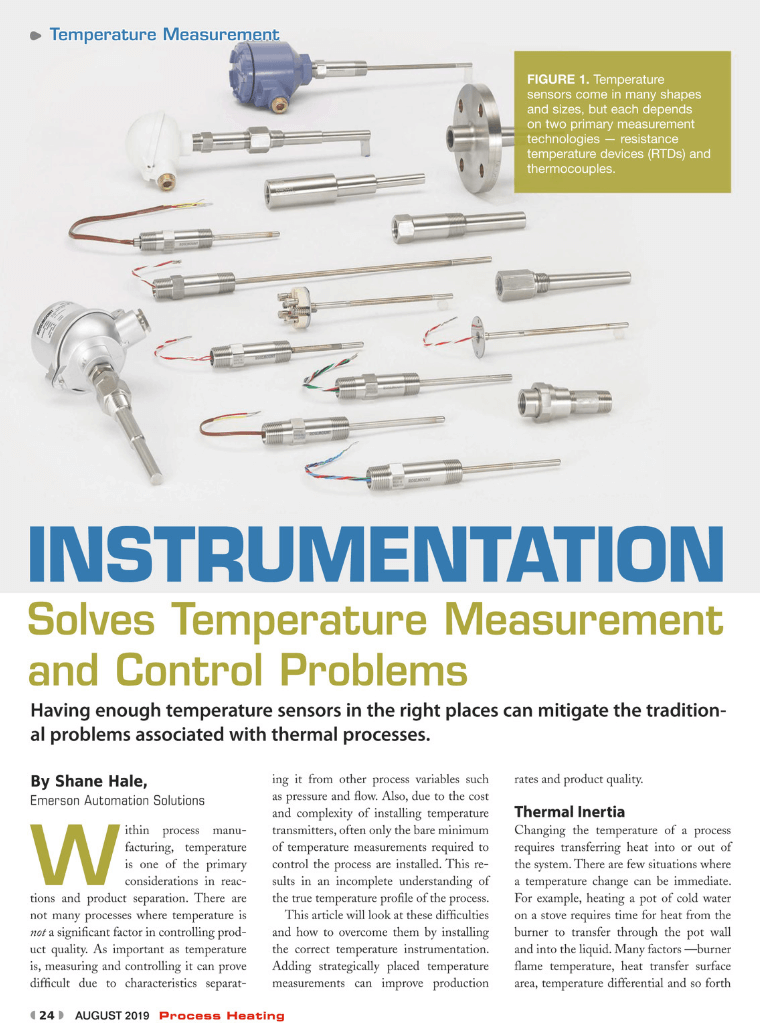Unlike pressure and flow measurement, temperature measurement can be much more complex given what is being measured. Fluids have thermal inertia characteristics which determine their temperature rate of change. In a Process Heating article, Instrumentation Solves Temperature Measurement and Control Problems, Emerson’s Shane Hale describes some of these challenges and how manufacturers and producers are overcoming them with today’s technology advancements.
 Installing temperature measurements has been a challenge historically. Shane explains that:
Installing temperature measurements has been a challenge historically. Shane explains that:
…due to the cost and complexity of installing temperature transmitters, often only the bare minimum of temperature measurements required to control the process are installed. This results in an incomplete understanding of the true temperature profile of the process.
Temperature control strategies:
…typically are designed to move temperature in a single direction — either cooling or heating the process medium.
Given minimal measurements and difficulty in correcting overshooting due to single direction control, inaccurate measurements can lead to production problems. Shane notes that adding:
…extra temporary or permanent temperature monitoring devices to various types of vessels can provide valuable insight into the process. The temperature measuring devices can help identify issues that may be affecting product quality or increasing energy consumption.
Innovations such as Rosemount X-well non-intrusive & wireless temperature measurement technology can provide the additional measurements without the installation difficulties. These don’t require piping penetrations and thermowells and work by determining process temperature by:
- The pipe skin temperature.
- The ambient temperature.
- The thermal properties of the pipe.
- The thermal properties of the process.
He shares some examples where the additional temperature measurements can help provide more reliable operations:
Many heat exchangers, however, are installed in a bank of four or more units, where only the inlet and the outlet of the combined bank of heat exchangers are measured. This temperature measurement is not as accurate as readings from the inlet and outlet of each individual heat exchanger.
Having additional temperature measurements per each heat exchanger outlet can identify fouling issues affecting energy efficiency and stable temperature control. For other applications such as mixing, cooking, reacting, etc., the temperature profile can be more accurately determined with additional measurements than is possible with a single measurement to provide optimum control for the application.
Read the article for more on how a WirelessHART network enables these additional wireless temperature measurements to be quickly and easily installed and used to improve overall operational performance.
Visit the Rosemount X-well Technology section on Emerson.com for more on this technology and ideal applications. You can also connect and interact with other temperature measurement & wireless instrumentation experts in the Measurement Instrumentation and IIoT & Digital Transformation groups in the Emerson Exchange 365 community.





